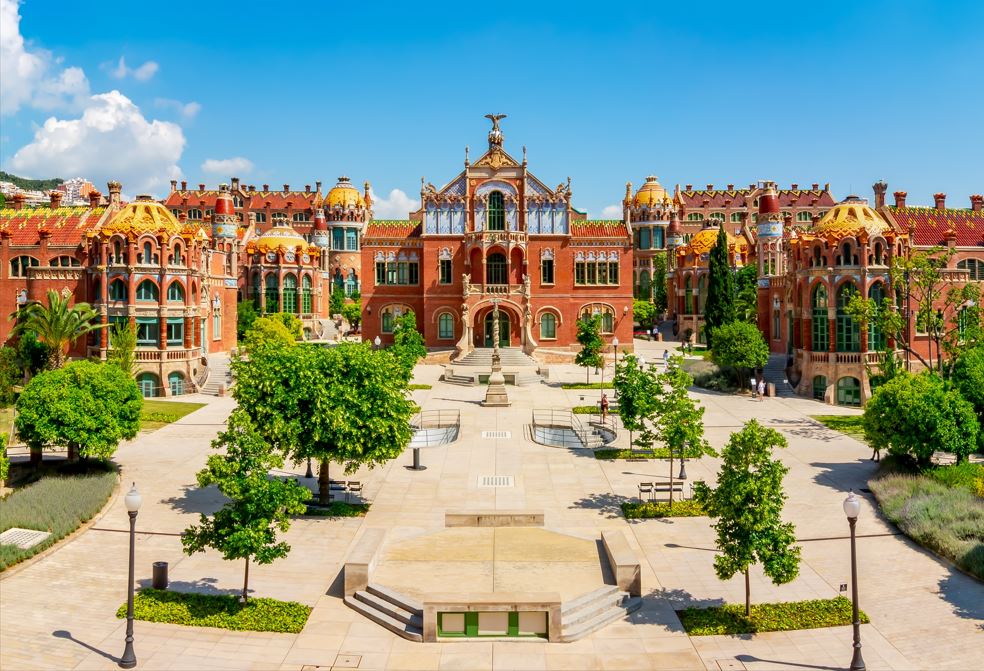The ongoing search for more sustainable and environmentally friendly solutions has led to a quiet yet powerful revolution in the world of design and architecture. One such solution is the increasing use of bioplastics in the construction of architectural surfaces. These materials, obtained from renewable sources, are transforming the way we design and construct buildings and structures. They offer sustainable alternatives that meet today’s environmental standards, unlocking new possibilities for a more eco-friendly industry.

Illustration 1: Polygonal facade modern architecture. Photo by iStockPhoto.
The rise of bioplastics
To measure the impact of bioplastics in architecture, we must first understand what they are and how they differ from conventional plastics. Bioplastics are polymeric materials made from renewable sources such as corn starch, sugar cane, cassava or even microorganisms. Unlike traditional petroleum-based plastics, bioplastics are biodegradable, compostable and, in many cases, recyclable.
This shift towards bioplastics is largely due to the growing awareness of the detrimental environmental effects of conventional plastics. Plastic pollutants, waste accumulation and the spread of microplastics in marine ecosystems have led to an active search for more sustainable alternatives. This is where bioplastics have emerged as a promising solution.
Bioplastics in architecture
Historically, architecture has had considerable environmental impact. This is largely due to the amount of materials and resources needed to build and maintain structures. With the introduction of bioplastics in architecture designers and architects have been able to address some of these issues. Consequently, there has been a move towards more sustainable practice.
One of the main benefits of bioplastics in architecture is versatility. As such, these materials can be used for a variety of architectural surface applications. For example, they range from façade cladding to interior finishes, ceilings and floors. Their adaptability means they are suitable for a wide range of projects. These include sustainable housing and commercial and public buildings.
Innovation and sustainable design
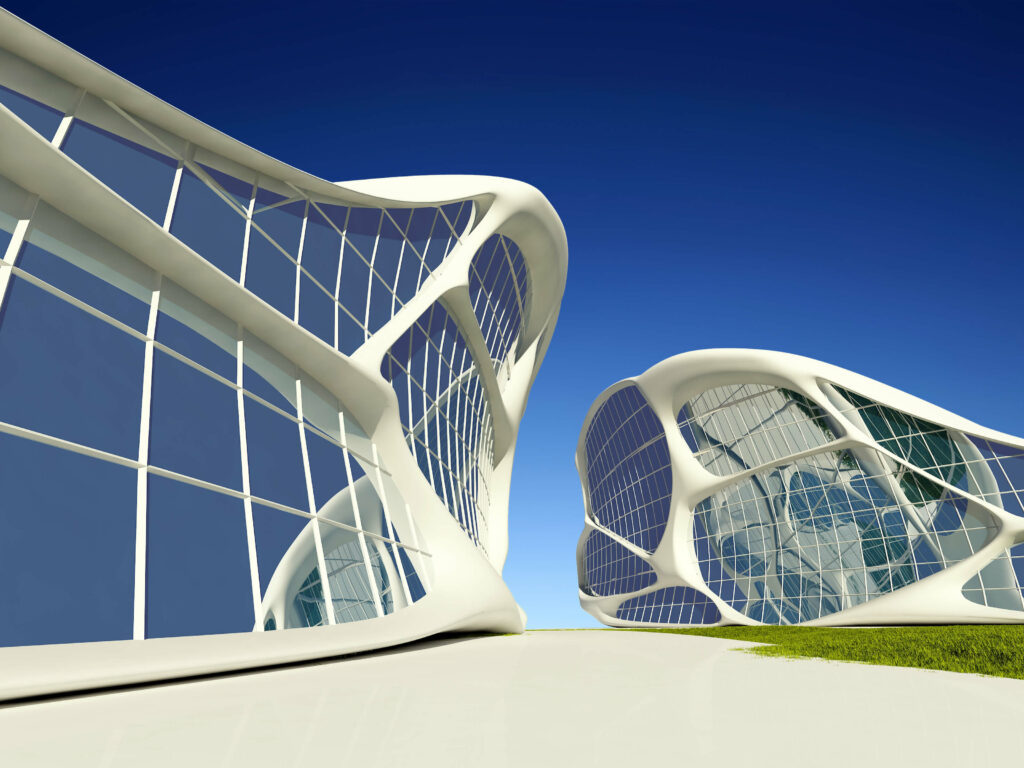
Illustration 2: Modern facade made of polymethylmethacrylate panels. Photo by Shutterstock.
Innovation in the use of bioplastics in architecture is evident in the creation of more sustainable and attractive architectural surfaces. Consequently, designers and architects are exploring new textures, colours and shapes. As a result, a diverse range of designs and architectural styles can be achieved.
A prime example is the use of bioplastics in façade cladding. These materials can mimic the appearance of wood, stone or even metals. They provde an attractive aesthetic while obviating the need to exploit limited natural resources. In addition, bioplastics are weather-resistant and durable. This makes them a viable option for long-term construction projects.
Complying with environmental standards
Sustainability is a key concern within the architecture and design industry. Therefore, bioplastics play a crucial role in meeting today’s environmental standards. These materials are biodegradable and compostable and thus reduce waste accumulation. Not only that, but they also have a lower carbon life cycle compared to conventional plastics.
Furthermore, the bioplastics production process generally requires less energy and emits fewer greenhouse gases. This contributes to reducing the carbon footprint of architectural projects, and helps mitigate climate change. As a result, bioplastics are aligned with the growing expectations of a more environmentally conscious society.
Inspiring examples
To better understand how bioplastics are transforming architecture, we will look at some inspiring examples:
- EM Lounge Sports, Navarra. An illustrative example of this practice is the EM Lounge Sports. A building for hosting social events, it was designed by architects Vaillo+Irigaray. Recycled plastic tubes painted green were used to create the building façade. Similarly, recycled glass was also used inside the building to create attractive visual effects with reflecting light. By means of reusing materials, such as plastic and glass, we can create contemporary and aesthetically appealing buildings. At the same time, we can promote environmental sustainability.
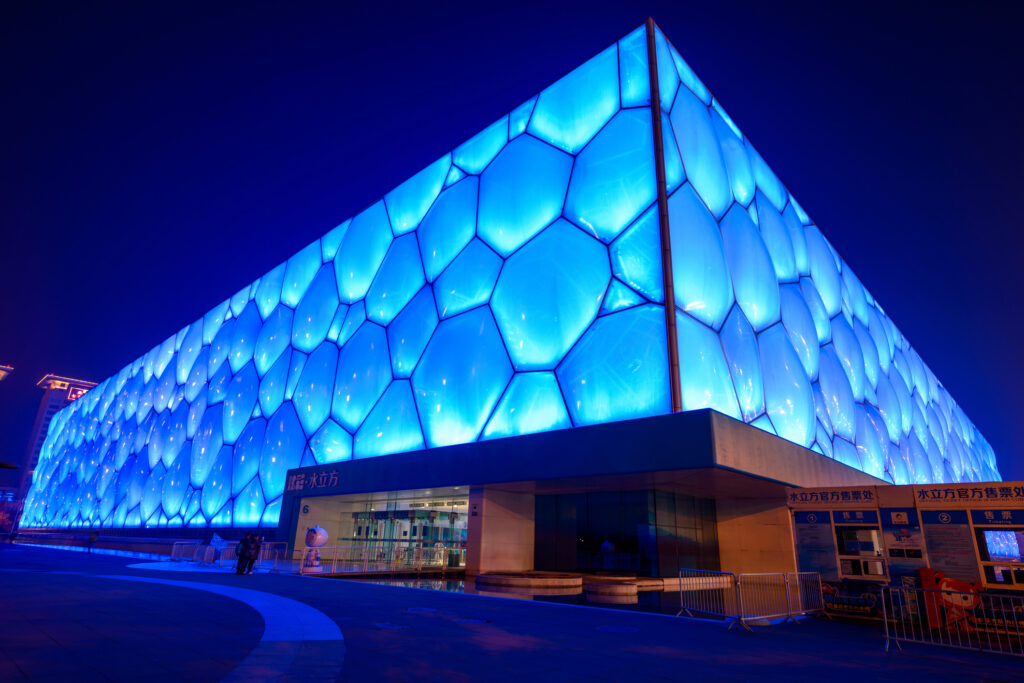
Illustration 3 Water Cube – Beijing National Aquatic Centre. Photo by iStockPhoto.
- Official seat of the European Union. Having assumed the rotating presidency of the Council of the European Union the Netherlands chose to build temporary headquarters in Amsterdam. An innovative move, it used 3D printing technology and bioplastic materials. The building façade was designed by DUS Architects. The unique elements of its composition mimic a ship’s sails in a tribute to the region’s naval tradition. These elements are not only aesthetically striking, but also serve as recesses fitted with benches, also manufactured using the same technology. The resulting combination of bioplastics and 3D printing technology creates a sculptural façade. Thus, it represents a significant advance in sustainable construction. It also demonstrates the potential of recycled plastic in large-scale architecture.
- The ArboSkin Pavilion. This pavilion is in Stuttgart, Germany. Its curved structure is made from Arboblend, a bioplastic developed by ITKE of the University of Stuttgart. Arboblend contains over 90% renewable materials, such as lignin and natural fibres. Designed by students and teachers, this project demonstrates the structural properties of bioplastics in construction. These thermoformed bioplastic sheets offer a sustainable alternative to conventional plastics and metals. They manage to combine the malleability and recyclability of plastics with the environmental benefits of renewable materials. This marks a significant step forward in the search for more environmentally friendly solutions in construction.
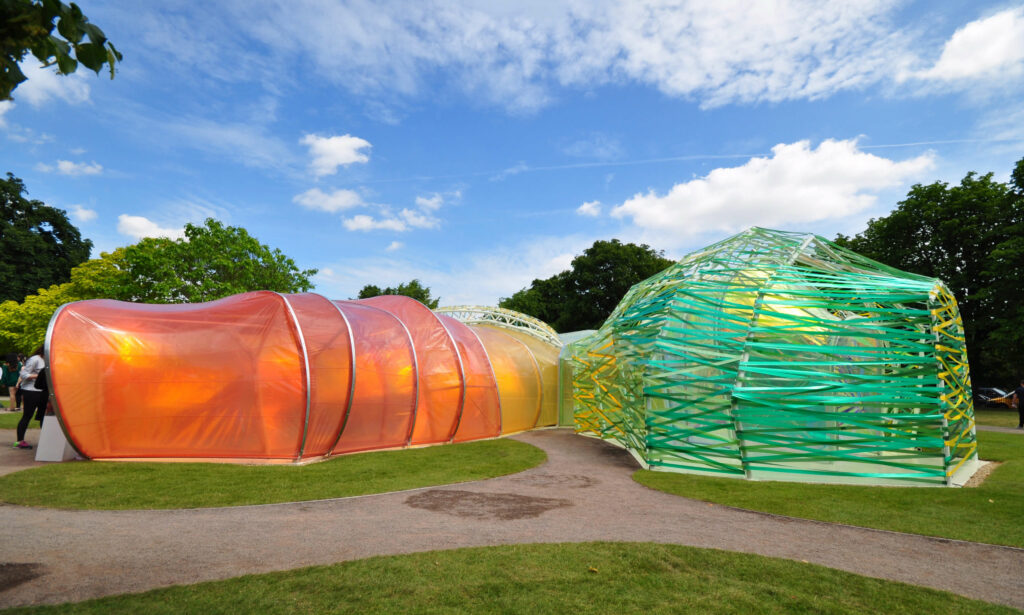
Illustration 4 The Summer Serpentine Pavilion designed by Salgascano. Photo by Shutterstock.
- Serpentine Pavilion 2015 by Selgascano. In 2015, Spanish architects Selgascano, led by José Selgas and Lucía Cano, designed the 15th Serpentine Pavilion in London. A unique structure, it consists of panels made of ETFE. This is a translucent, multicoloured plastic, wrapped in an amorphous polygonal shape, and supported by metal profiles. Visitors could explore it through multiple entry points. As a result, it is possible to enjoy a surprising variety of environments inside. Photographed by Iwan Baan, this plastic pavilion was a masterpiece of contemporary design, opening to the public at the end of its inauguration week.
- Bioplastic cladding panels.Bioplastic cladding panels that mimic the appearance of wood or stone are being used in some construction projects. These panels are light, easy to install and highly resistant to adverse weather conditions.
Challenges and considerations.
Despite the benefits, using bioplastics in architecture is not devoid of challenges and considerations. One of the main issues is the availability of raw materials, as demand for bioplastics increases.
Furthermore, the durability of bioplastics in long-term applications is still an area of ongoing research. While they are suitable for temporary projects and certain applications, it is important to understand their limitations. For example, some architectural projects require a very long service life.
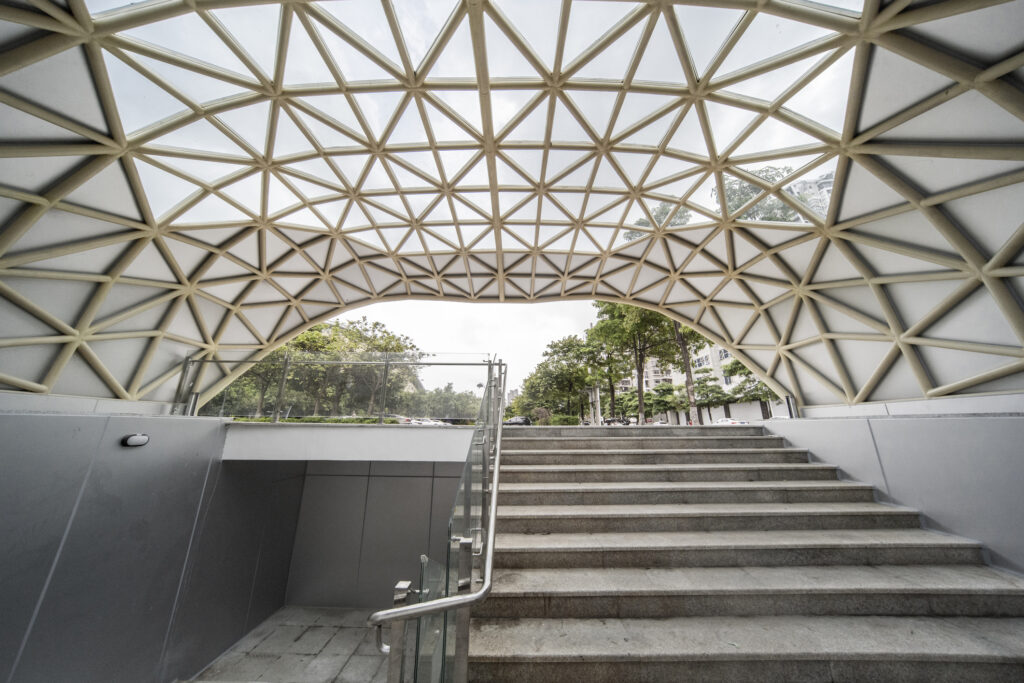
Illustration 5: Urban public subway with bioplastic liner. Photo by iStockPhoto.
The future of sustainable architecture
In conclusion, the bioplastics revolution in developing sustainable architectural surfaces is an important step towards a more environmentally friendly future. Materials such as these mean that designers and architects can create innovative and attractive structures while they are not obliged to sacrifice sustainability.
As bioplastic technology advances and its challenges are addressed, we can expect to see an increase in use in the architectural industry. This will drive greater energy efficiency and carbon footprint reduction in building projects. Similarly, it will contribute to the creation of a more environmentally friendly and aesthetically pleasing built environment.
Bioplastics are proving that sustainability and innovative design can go hand in hand in modern architecture. It is exciting to see how this revolution will continue to transform the industry in the years to come.

